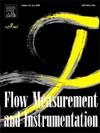Evaluation method of tubing leakage flow rate based on acoustic detection technology
IF 2.3
3区 工程技术
Q2 ENGINEERING, MECHANICAL
引用次数: 0
Abstract
Tubing leaks can lead to abnormal annular pressure in gas wells, which seriously threatens the safety of gas well production. Accurate diagnosis of tubing leakage flow rate is helpful to judge the degree of downhole leakage and provide guidance for taking timely and effective remedial measures. In this paper, the acoustic detection technology is used to evaluate the leakage flow rate of downhole tubing. The self-made experimental device is utilized to conduct the tubing leakage sound wave experiment in the presence of typical leakage working states, which obtains the leakage acoustic data. An evaluation method to the leakage flow rate of downhole tubing is proposed by combining improved sparrow search algorithm (ISSA) and random forest (RF). Firstly, the correlation coefficient is used to select the acoustic characteristics as the model's input. Then the ISSA is applied to optimize the random forest model. Finally, the leakage flow rate is evaluated based on the established ISSA-RF model. The results reveal that the proposed method exhibits higher accuracy, and the coefficient of determination is as high as 0.8940, which effectively improves the accuracy. It provides technical support for diagnosing the downhole tubing leakage condition and repairing the leakage of downhole tubing.
求助全文
约1分钟内获得全文
求助全文
来源期刊

Flow Measurement and Instrumentation
工程技术-工程:机械
CiteScore
4.30
自引率
13.60%
发文量
123
审稿时长
6 months
期刊介绍:
Flow Measurement and Instrumentation is dedicated to disseminating the latest research results on all aspects of flow measurement, in both closed conduits and open channels. The design of flow measurement systems involves a wide variety of multidisciplinary activities including modelling the flow sensor, the fluid flow and the sensor/fluid interactions through the use of computation techniques; the development of advanced transducer systems and their associated signal processing and the laboratory and field assessment of the overall system under ideal and disturbed conditions.
FMI is the essential forum for critical information exchange, and contributions are particularly encouraged in the following areas of interest:
Modelling: the application of mathematical and computational modelling to the interaction of fluid dynamics with flowmeters, including flowmeter behaviour, improved flowmeter design and installation problems. Application of CAD/CAE techniques to flowmeter modelling are eligible.
Design and development: the detailed design of the flowmeter head and/or signal processing aspects of novel flowmeters. Emphasis is given to papers identifying new sensor configurations, multisensor flow measurement systems, non-intrusive flow metering techniques and the application of microelectronic techniques in smart or intelligent systems.
Calibration techniques: including descriptions of new or existing calibration facilities and techniques, calibration data from different flowmeter types, and calibration intercomparison data from different laboratories.
Installation effect data: dealing with the effects of non-ideal flow conditions on flowmeters. Papers combining a theoretical understanding of flowmeter behaviour with experimental work are particularly welcome.
 求助内容:
求助内容: 应助结果提醒方式:
应助结果提醒方式:


